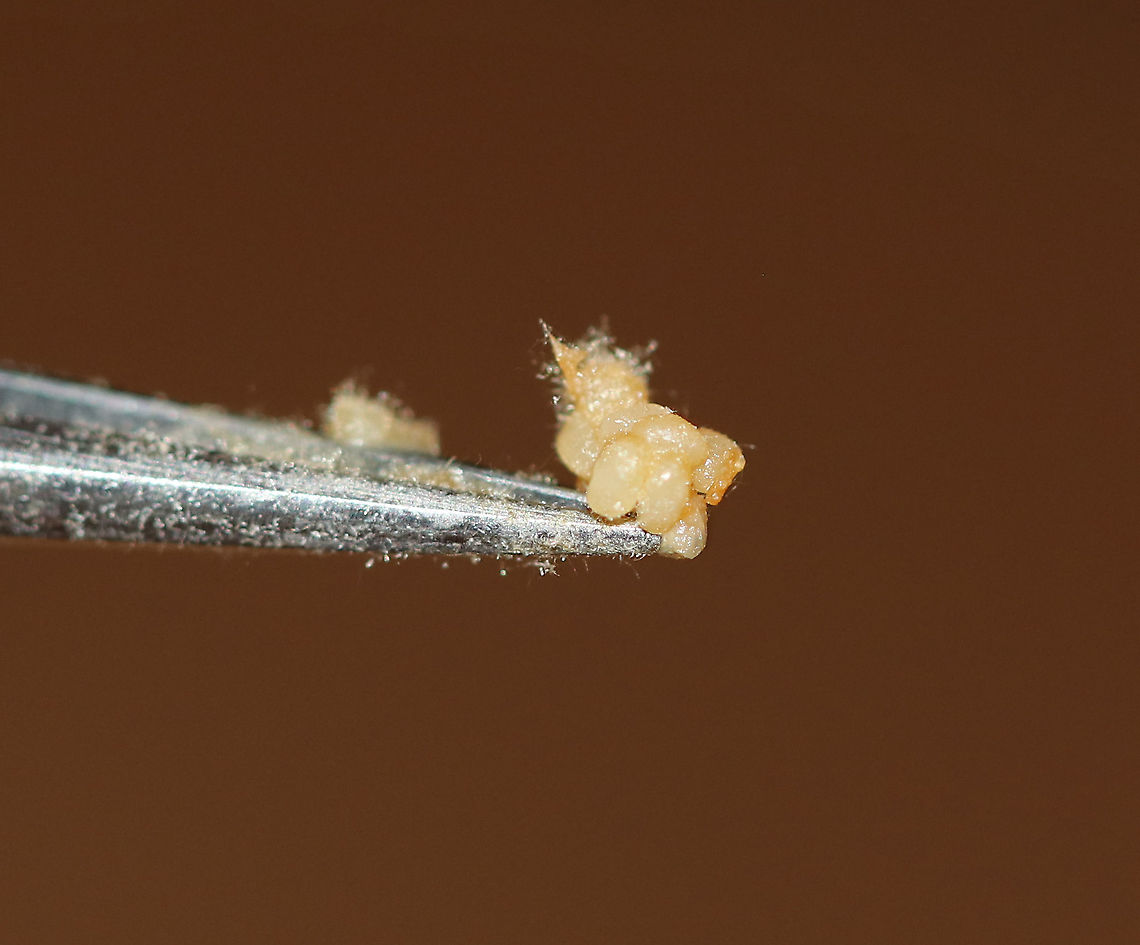
Evergreen Bagworm (Eggs) - Thyridopteryx ephemeraeformis
I frequently find tons of these bagworm cases hanging on arborvitae, buildings, and trees in my neighborhood. Today, I was examining some and noticed that many of them did not have openings in them (meaning that the larvae hadn't hatched out). I took three home and dissected them to find that they contained dead females, two of which had viable eggs).
Here's how it works: Female bagworms never leave their cocoon. They require a male to mate with her through her case. She has no eyes, legs, wings, antennae, and can't even eat! After mating, she dies, and her body contains hundreds to thousand of eggs. The eggs overwinter, and then hatch, chewing their way through her body and case to emerge and start their own cases.
Habitat: Rural area
Here's the female that I extracted these eggs from:
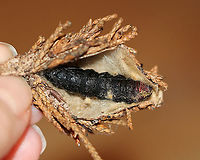
Check out my other bagworm spottings:


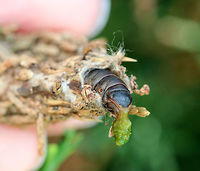
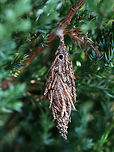
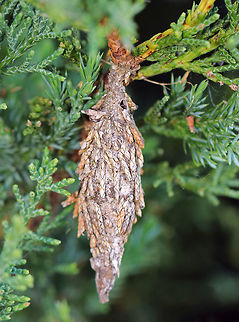
The evergreen bagworm, commonly known as bagworm, eastern bagworm, common bagworm, common basket worm, or North American bagworm, is a moth that spins its cocoon in its larval life, decorating it with bits of plant material from the trees on which it feeds.
